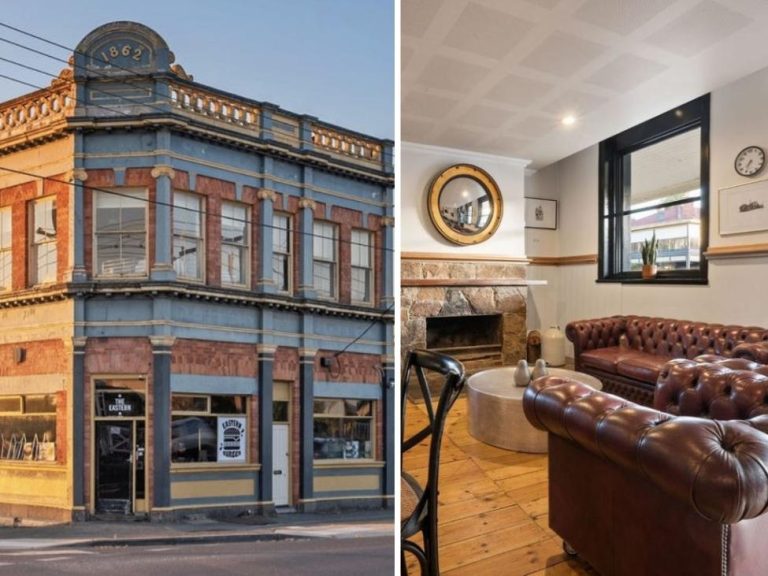Gyms the new shopping centre darlings

Todd Mullins and his wife, Julie, started going to a shopping centre 15 minutes from their Palm Beach Gardens home in Florida about a year ago — after they joined a gym inside it. They work out at the Orangetheory Fitness there three to four times a week, and at least half the time visit a nearby juice shop, restaurant or Trader Joe’s, he says.
“There would be no other reason to go to that mall,” says Mullins, a senior pastor at a local church.
Mall owners long treated gyms like pool halls, unwanted tenants that attracted lower-rent visitors who were unlikely to shop. Now they’re giving health clubs some of their best real estate.
Commercial Insights: Subscribe to receive the latest news and updates
The reason is twofold. Retailers have closed hundreds of stores across the US amid increasing competition from online shopping, leaving mall owners to grapple with declining foot traffic and rising vacancies.
At the same time, fitness centres have boomed and diversified, and a proliferation of smaller, boutique gyms that draw higher-end customers have created more attractive tenants that are easier to accommodate.
The result is that health clubs that were once pariahs at malls are helping transform them into hubs of living, working and playing.
The department stores sort of prevented you from doing anything but having retail shopping
Westfield has 33 US malls, many with assets greater than $US1 billion ($1.3 billion). More than half of them have some sort of health club, up from about 10% a decade ago.
A SoulCycle studio is scheduled to open early next year at Westfield’s UTC outdoor mall in San Diego. It will nestle beside two restaurants that serve organic and locally sourced foods, and a short walk from several cosmetics stores — also hot sellers.
“We’re thinking of this as an ecosystem,” says David Ruddick, Westfield executive vice-president of leasing. “It’s not just a workout.”
Sandeep Mathrani, chief executive of Chicago-based GGP says that 25 years ago, the best real estate was given to the department stores.

Shopping centres are now welcoming gyms with open arms.
“And the department stores sort of prevented you from doing anything but having retail shopping. So today, their sort of slow retraction is giving us the opportunity to reinvent the wheel.”
Mathrani says gyms are one element in making regional malls as well-rounded as downtown areas were years ago, with a YMCA and small shops as well as department stores.
GGP plans to integrate fitness centres into half of its 115 malls in the next decade, he says.
Phillips Edison & Company has gyms in 44% of its more than 340 grocery-anchored shopping centres, according to chief executive Jeff Edison. In the mid-1990s, the company had just a few centres with gyms because tenants viewed typical gym-goers as teenage weightlifters more likely to hang out on the curb than to shop, Edison says.
Many of the new tenants at shopping centres are gyms and specialty fitness studios that in some cases are barely bigger than a Starbucks store. But owners of regional malls also are welcoming sprawling, full-service health clubs as anchor tenants, sometimes replacing the stores that once excluded them.
We’re thinking of this as an ecosystem. It’s not just a workout.
GGP is replacing a Macy’s at Oklahoma City’s Quail Springs Mall with a Life Time health club with indoor and outdoor pools and tennis courts.
GGP soon will open the first gym, a Planet Fitness, in Honolulu’s Ala Moana Centre, which is part owned by AustralianSuper, whose 350 stores include Louis Vuitton and a Tesla showroom.
Years ago, health clubs were “on a long list of prohibited uses that included massage parlours, billiards halls and pawnshops”, says Steven Gartner, managing director of retail at commercial real estate firm CBRE. If gyms were allowed in malls at all, landlords often relegated them to back corners.
Now, fitness has been booming. More than 57 million people belonged to a health club last year — 19.3% of the US population — and memberships have jumped 26% since 2009, according to IHRSA.
Gyms fit into a broader push by mall owners to reinvent themselves as centres of entertainment at a time when so much of apparel sales have moved online. Landlords are adding restaurants, ice-skating rinks, pools and other recreational options to boost sagging foot traffic.
There is also evidence that gyms might not be the retail repellent that mall owners long thought. More than 40% of health-club members reported household incomes exceeding $100,000 in 2016, according to IHRSA, compared with 26% of the overall population.
Consumer spending at fitness centres climbed 3.7% in the third quarter over last year, according to Atlanta-based spending-data analysis firm Cardlytics.
By comparison, spending on apparel at brick-and-mortar stores rose 0.5%. And people who work out are more likely than ever to shop afterwards because it has become socially acceptable to wear fitness clothing outside the gym, says David Jamieson, chief operating officer at Kimco Realty.
Kimco owns 507 mostly grocery-anchored shopping centres, about one-third of which house health clubs. A 2015 Kimco case study found the arrival of LA Fitness gyms at two shopping centres, one in Connecticut and another in the greater New York metro area, prompted 15-20% rent increases for nine new, neighbouring tenants, Jamieson says. Six existing tenants had sales increases of 30% or more in the year after the gym opened, he says.
– The Wall Street Journal
This article originally appeared on www.theaustralian.com.au/property.







